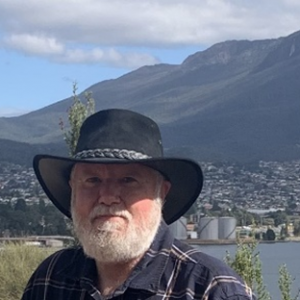
RST Apology to Tasmanian Aboriginal people 2021.

RST Apology to Tasmanian Aboriginal people 2021.

What is an Aboriginal cultural landscape and how are they being managed? Tasmanian Aboriginal people sustainably managed our environments through their relationship with Country. The imposed settler-colonial framework has seen changes to these environments. Pest species are spreading uncontrollably, and wildfire is rising. It’s time to re-think how these landscapes are managed. This talk discusses how empowering regional Aboriginal communities to manage these places can lead to better environmental and social outcomes.

Rob is an Indigenous Fellow and PhD candidate in the School of Geography, Planning and Spatial Sciences at UTAS. With a spatial sciences background, he’s authored maps on Tasmania’s Aboriginal discourse, e.g. in books by Aunty Patsy Cameron (AO) and Lyndall Ryan. Rob has a long involvement at the regional Aboriginal community level and served 5 years on Tasmania’s Aboriginal Heritage Council. His interests are in strength-based approaches to Aboriginal empowerment, sustainability, and cultural land management.

The Royal Society of Tasmania acknowledges, with deep respect, the traditional owners of this land, and the ongoing custodianship of the Aboriginal people of Tasmania. The Society pays respect to Elders past, present and emerging. We acknowledge that Tasmanian Aboriginal Peoples have survived severe and unjust impacts resulting from invasion and dispossession of their Country. As an institution dedicated to the advancement of knowledge, the Royal Society of Tasmania recognises Aboriginal cultural knowledge and practices and seeks to respect and honour these traditions and the deep understanding they represent.

On 15 February 2021, the Royal Society of Tasmania offered a formal Apology to the Tasmanian Aboriginal people.